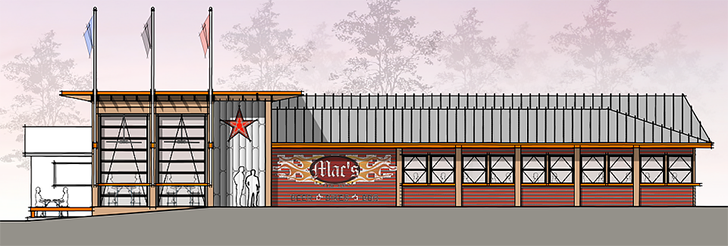

For the previous 6 months, after I replaced my HDD with an SSD because it died, the fans were constantly revved up. I resurrected it in mid-2015 when my G5 Quad died, and the motherboard died in December 2017-by which time the MBP was officially "obsolete". When it turned out I didn't (flash drives had been invented) and I decided not to take the follow-on course, I let the MBP sit on the floor for 3.5 years.
Macs speed shop mathews pro#
I bought an 15-inch Early 2011 MacBook Pro because an out-of-date Continuing Education catalog said I needed a laptop. My experience differs, but it was a rather special case. Show of hands please from anyone who's experience differs.

Which is about the craziest thinking in the world, where I give you a shitty experience so you go buy our new product.Īnecdatally, the vast, vast majority of my MacBooks, both owned and administered, have survived well past the warranty period and to my best recollection none of them fried in the manner you describe. If you disable Turbo Boost and are getting high temps and fan speeds, either you're doing something serious on the GPU (in which case messing around with CPU voltages won't do anything) or something is seriously wrong with your cooling system or firmware. Of course, I try to avoid doing that on a laptop, but sometimes I don't have a better option. The 56% boost in speed comes at a price of more than 3x in power consumption.įor non-critical overnight testing, I prefer to disable Turbo Boost just to preserve the laptop a little. These CPUs run much more efficiently at 2.3 GHz than at 3.6 GHz. If you have turbo boost disabled and start a heavy workload, the CPU will run at 2.3 GHz, fan speeds will stay at 1200 RPM, and temperatures will stay at around 70 C indefinitely (even all night). It will alternate between 2.3 GHz and 3.6 GHz so that the temperatures stay near 100 C and the fans stay around 7000 RPM. When the fans start to reach their max of around 7000 RPM, the CPU will start to intermittently throttle. When the CPU temperature starts to get close to 100 C, the fans will start to spin up from their base RPM of 1200.ģ. First, the CPU temperature will start to climb towards 100 C or so.Ģ. If you have turbo boost enabled and start a heavy CPU workload, the following will happen:ġ. If the CPU is overheating, the turbo boost should turn itself off automatically.

Macs speed shop mathews how to#
Look at it this way: If you had a problem with the transmission in your car where you couldn't shift into third gear, would you post asking how you could lock your car to only use first and second gear? No, you'd figure out how to fix third gear. Attempting to gimp the processor strikes me as not fixing the root problem. Because if you're hitting those temperatures at that low of a load, there's something else going on. There are guides on how to do this out there, flex your Google-Fu. Or if it's out of warranty and you're the fixin' type, do what armwt said earlier and take it apart to re-apply thermal paste between the processor and its heatsink. To reiterate what others have said: If your temperatures are that out of whack, take the machine to an Apple Store. nike00 may be misguided in his approach, but that doesn't warrant being rude. It's entirely unnecessary and adds nothing to the conversation.

I'm not trying to defend the OP here, I don't know them, but certain Ars posters are quite hostile to new posters for unknown reasons.


 0 kommentar(er)
0 kommentar(er)
